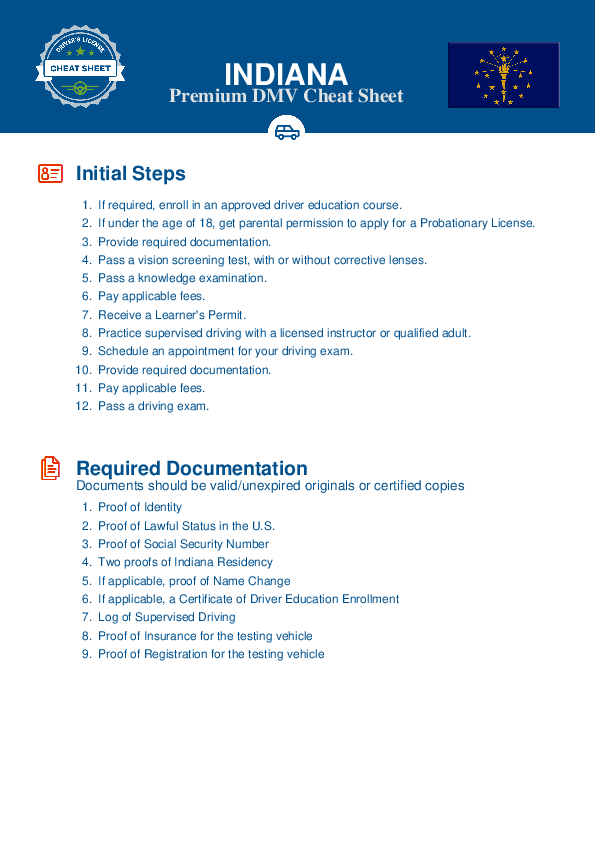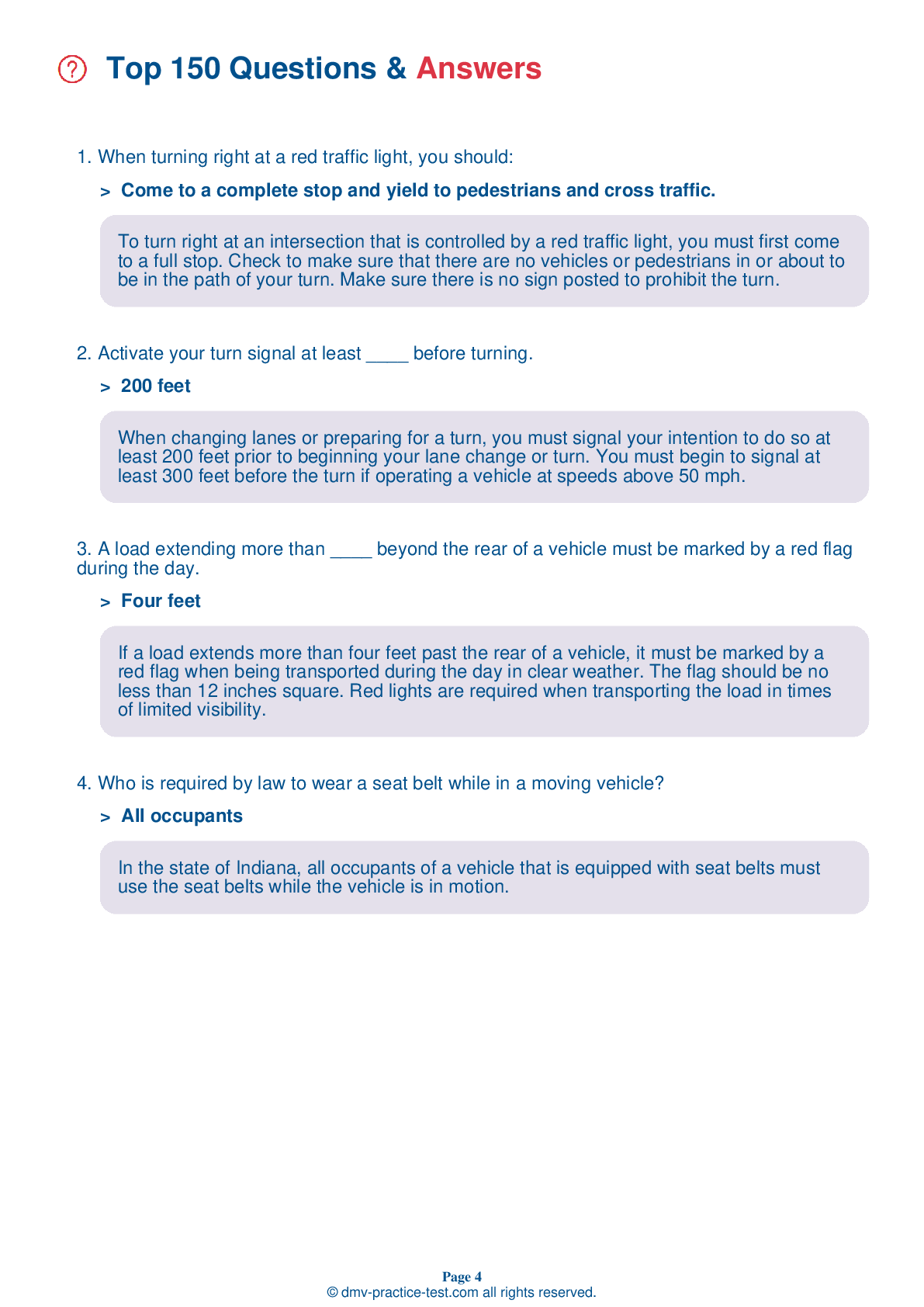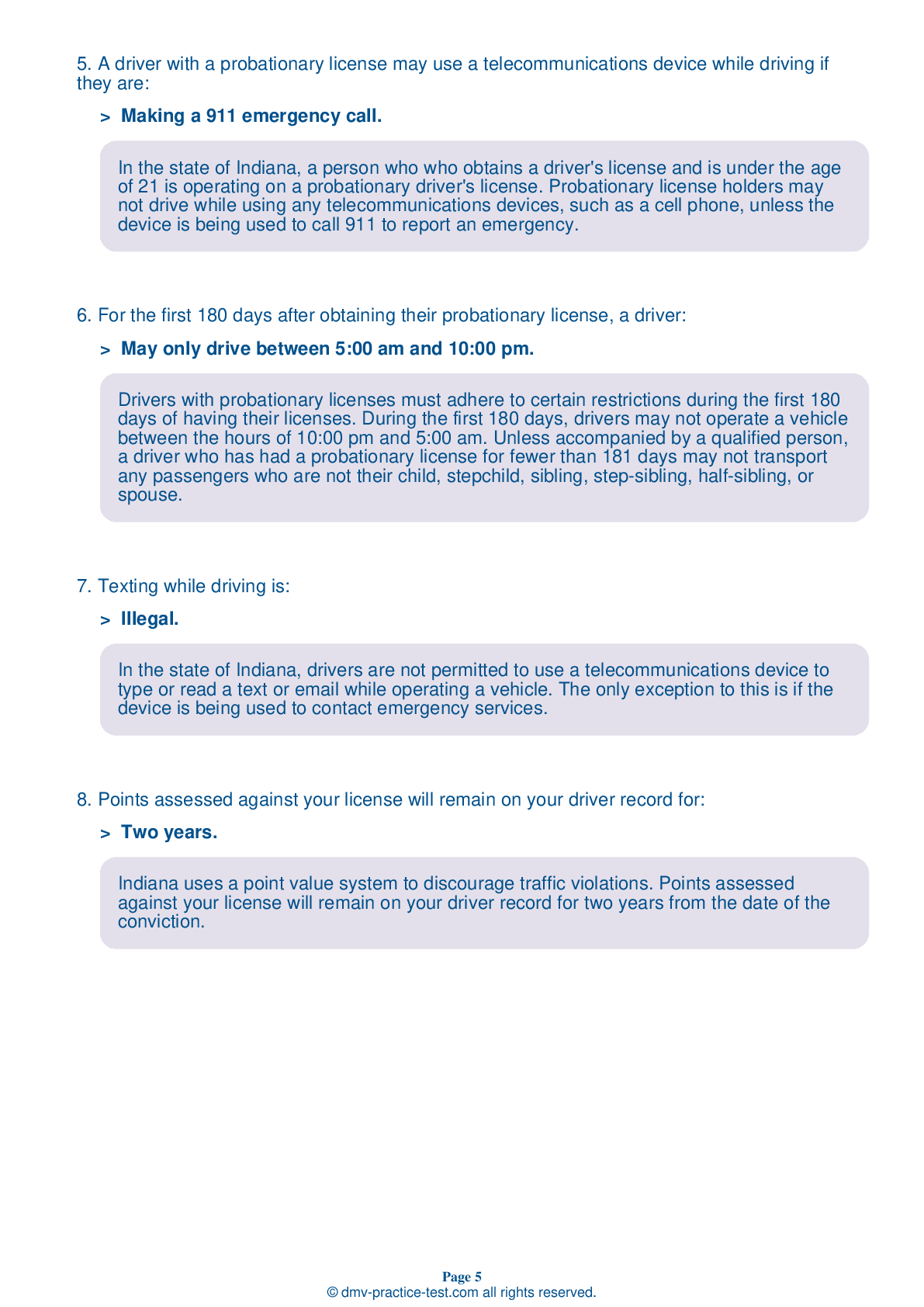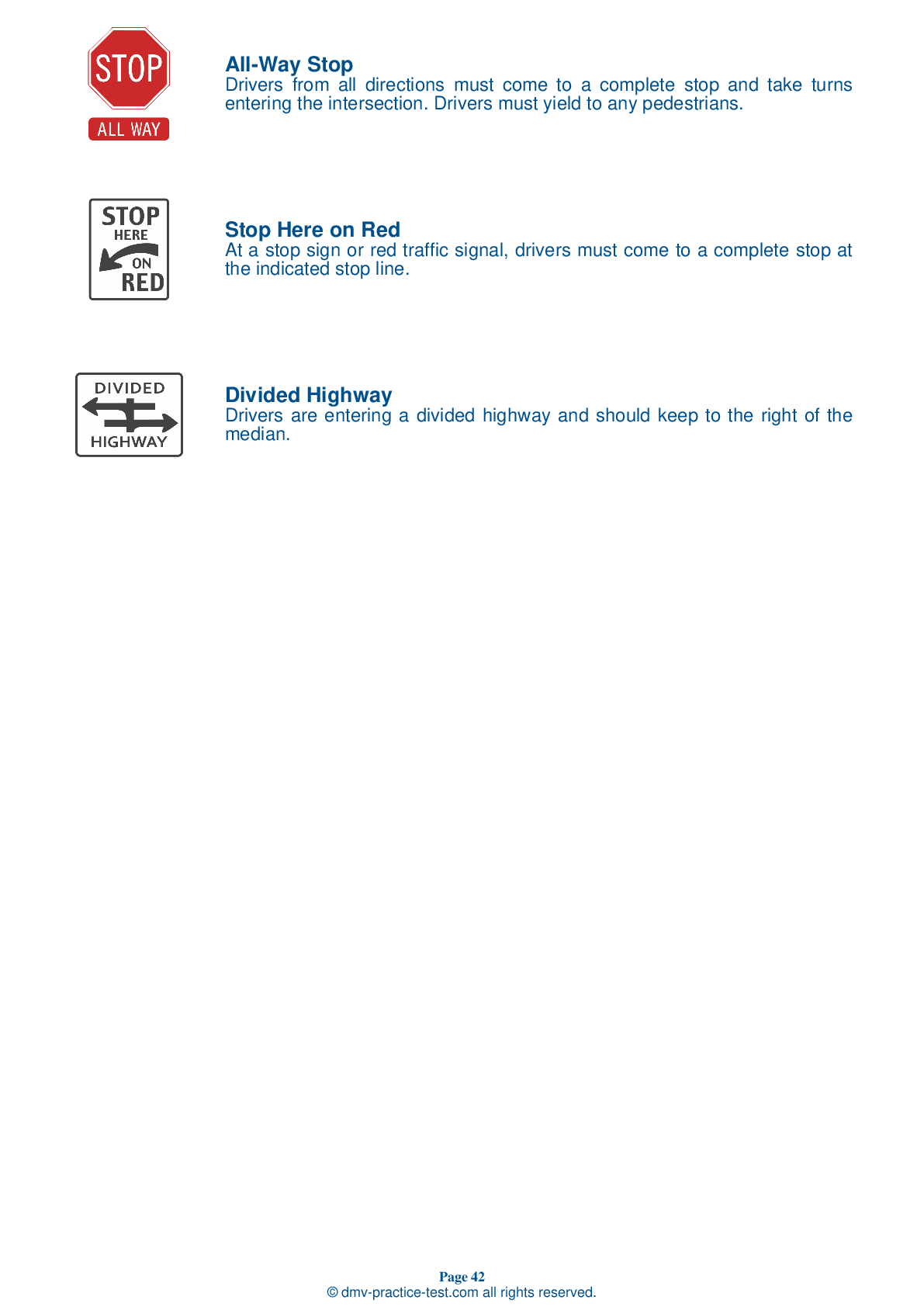FREE Indiana DMV Practice Test #10 Page 5 of 5
This set of Indiana DMV practise tests has been updated for January 2025. It includes questions based on the Indiana Driver Handbook's most significant traffic signals and laws for 2025. Use actual questions that are very similar (often identical!) to the DMV driving permit test and driver's licence exam to study for the DMV driving permit test and driver's licence exam.
On the practise exam, each question gets a tip and explanation to help you remember the concepts. The written component of the official Indiana DMV test will include questions about traffic rules, traffic signs, and driving statutes, as well as information from the Driver Handbook.
To obtain a passing grade, you must correctly answer 44 of the 50 questions. Take our DMV practise exam to help you prepare for your Indiana instruction permit or driver's licence.
The DMV exam is available in several languages.
Using any kind of testing assistance will result in an automatic fail, and the DMV may take additional action against your driver's licence, so stay away from it.
39 . Certain highway signs require drivers to obey an indicated instruction. Such signs are known as:
Regulatory signs require drivers to obey an indicated instruction. Failure to comply is subject to penalty.
40 . The consumption of alcohol while taking drugs can:
The combination of alcohol and drugs, in some cases, can increase the effects of both the drugs and alcohol. It can be unsafe to drive after consuming either alcohol or drugs and is even more dangerous after combining them.
41 . Increase your following distance when:
You should increase your following distance when you are behind a large vehicle that blocks your vision, when driving in bad weather or heavy traffic, when exiting an expressway, when behind a motorcycle or bicycle, and if someone is tailgating you.
42 . This sign means:
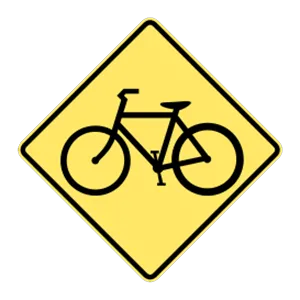
This sign provides advance warning that bicycles may be present.
43 . This sign means:
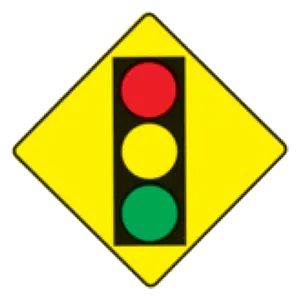
Warning signs are usually diamond-shaped with black markings on a yellow background. They alert drivers to upcoming hazards. This warning sign indicates that a traffic signal is ahead and drivers should prepare to react to a yellow or red light.
44 . When you see this sign, you must:

Any eight-sided sign is a stop sign. At an intersection with a stop sign, you must stop completely and check for pedestrians and cross traffic in the intersection. Wait for the intersection to clear before proceeding.
45 . This road sign means:
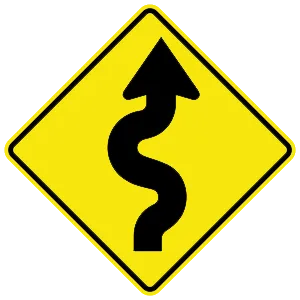
This sign indicates that the road ahead winds with a series of turns or curves.
46 . This sign means:
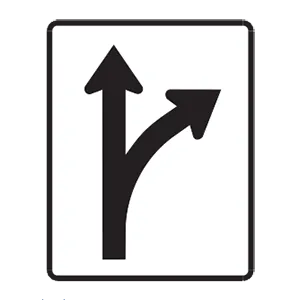
Regulation signs regulate traffic speed and movement, displaying rules which drivers must obey. This regulation sign tells drivers that they may either turn right or continue to drive straight at an intersection from the indicated lane.
47 . This road sign means:
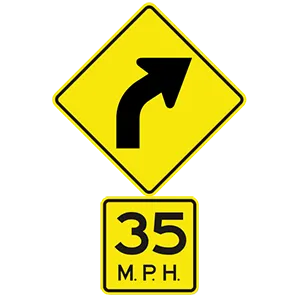
These signs indicate that the road curves to the right ahead and that drivers should slow down to the safe speed indicated (in this case, 35 mph).
48 . This sign means:

Regulation signs regulate traffic speed and movement, displaying rules which drivers must obey. This regulation sign indicates that drivers turning left at a green light must yield to oncoming traffic and may complete the turn when it is safe to do so.
49 . This road sign means:

An eight-sided sign always means "stop." You must come to a complete stop and wait for any vehicles or pedestrians to clear the way before proceeding.
50 . You are driving when it starts to sleet or snow. You should:
In snowy weather, keep your windshield and mirrors clear. Increase your following distance when driving in wet and cold weather because a slippery road surface will increase the distance needed for your vehicle to stop.
Need Car Insurance? No problem!
Compare the best rates in Indiana and find a personalized policy that meets your needs.
1. Are You Currently insured ?
2. Married ?
3. Do you own your Home?
4. Do you have more than 1 car ?
5. Have you or a Family Member Honorably Served in U.S. Military ?
6. Your Name
7. Age
8. Zip code
IMPORTANT REMINDER:Auto Insurance is Mandatory to drive in Indiana. Get covered before you hit the road to avoid any fines.
Ranked by best match
